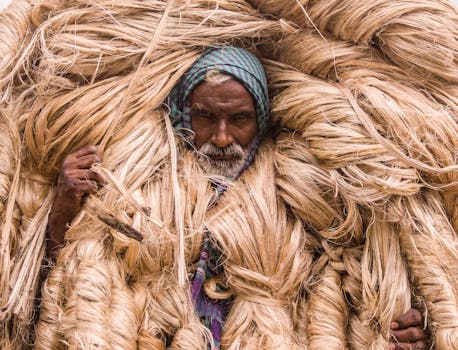
From Cotton to Innovation: How African Fiber Companies are Transforming Textiles
From Cotton to Innovation: How African Fiber Companies are Transforming Textiles is a story of African fiber companies transforming the textile industry. The African continent has long been a major player in the global textile market, with countries such as Egypt, South Africa, and Morocco being among the top cotton producers in the world. However, in recent years, African fiber companies have been shifting their focus from traditional cotton production to more innovative and sustainable textile technologies.
African fiber companies are now at the forefront of textile innovation, with many companies investing in research and development to create new and sustainable textile products. For example, some companies are using plant-based fibers such as bamboo and hemp to create eco-friendly textiles, while others are using cutting-edge technologies such as 3D printing and nanotechnology to create advanced textile materials.
The Rise of Sustainable Textiles
The rise of sustainable textiles is a significant trend in the African textile industry, with many companies recognizing the need to reduce their environmental impact. Sustainable textiles are made from materials that are environmentally friendly, such as organic cotton, recycled polyester, and plant-based fibers. These materials not only reduce the environmental impact of textile production but also provide a number of benefits to consumers, including improved durability and comfort.
African fiber companies are also investing in sustainable textile production methods, such as using solar power and reducing water consumption. For example, the Egyptian company, Misr Spinning and Weaving Company, has invested in a solar power plant to reduce its carbon footprint and dependence on non-renewable energy sources.
Textile Innovation in Africa
Africa is also home to a number of innovative textile companies that are using cutting-edge technologies to create advanced textile materials. For example, the South African company, Council for Scientific and Industrial Research (CSIR), has developed a number of innovative textile products, including a fire-resistant fabric made from a combination of natural and synthetic fibers.
Another example is the Moroccan company, Institut de Recherche en Textile et Habillage (INRH), which has developed a number of innovative textile products, including a waterproof and breathable fabric made from a combination of natural and synthetic fibers. These companies are not only creating new and innovative textile products but also providing jobs and stimulating economic growth in their local communities.
The Future of African Textiles
The future of African textiles is bright, with many companies investing in research and development to create new and sustainable textile products. The African continent has a number of advantages that make it an attractive location for textile production, including a large and growing population, a favorable climate, and an abundance of natural resources.
However, the African textile industry also faces a number of challenges, including competition from other regions, such as Asia, and the need to invest in infrastructure and training to support the growth of the industry. Despite these challenges, many African fiber companies are confident about the future of the industry and are investing in innovative technologies and sustainable production methods to stay ahead of the competition.



